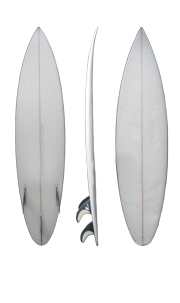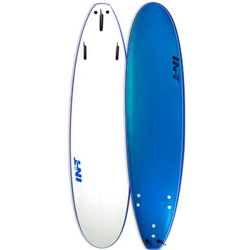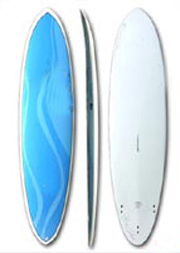A warm happy holiday to all your surfing gals out there! Santa hasn't sent us much swell lately but keep your fingers crossed for some fun nor'easter weather heading our way.
If you haven't tried cold water surfing yet, now is your opportunity. We have a few cold waters surfers that would be glad to join you, just give us a call. Check our meetup site under discussion for posts when the gals go out.Surfing Gals Meetup
Here is a great cold water article to get you excited!! Happy Holidays- Mere
The waves are head-high and pumping and no one is in the water. So, why aren't you surfing--is it the sub-arctic temperatures? No. Get in there... and stay warm. Don't let the cold water keep the waves to the fish alone. With proper preparation and the right wet suit, you can surf those lonely cold waves all the way to the beach. Read on to learn how to keep warm when surfing in cold water.
- Warm yourself from the inside out. Before you even get close to the water, prepare your body by filling it with fuel. Stoke the fires with high-fat foods, such as nuts or peanut butter, to get your inner furnace burning.
- Add some warm liquids to that furnace to get things cooking. Take a thermos of tea with you to the break--it will come in handy later as well, to warm you up after your private session. Dehydration also makes it easier for hypothermia to develop, so drink up.
- Wear warm clothes to keep in that body heat. Put a hat on your head as well. You don't want to be chilly before you even stick your toes in that cold water.
- Do some warm-up exercise to get your blood pumping once you're at the surf break: light jogging, stretching, calisthenics, yoga. It'll warm you up and also help you perform better, while reducing your chance of injury. It's easier to pull a muscle when your body's cold.
- Put on that wet suit. If you haven't already, get your suit on. Check with your local surf shop or online for size, style and thickness recommendations. Suits come in different thicknesses designed for different water temperatures. In the end, the appropriate thickness depends on you. some people tend to stay naturally warmer than others. Test out a friend's suit, if possible, to gauge your personal needs before you buy your own.
- Cover your noggin with a wet suit hood if the water is really cold. We lose most of our body heat through our head, after all, and there's nothing worse than cringing before a duck dive into a freezing cold wave face.
- Consider other extras, such as booties and gloves, if your hands and feet are going numb. Our body shunts off blood flow to the extremities when we're cold to help keep our core warm.
- Remain active in the water. We have an amazing ability to keep our bodies warm by burning our own energy source through exercise. Now is the time to put that food you ate earlier to good use--it's the fuel for your fire. Paddle around...don't just sit and wait in the cold.
- Head to the beach as soon as you start to really feel the cold. Involuntary teeth chattering or shivering are signs that your body has already gotten too cold. Even when mild hypothermia starts to set in, we perform below capacity and are prone to make foolish decisions. As you know, the ocean is no place for that.
- Enjoy your thermos of warm tea and reflect on the beautiful waves you had all to yourself. Head home and warm up with a nice shower or a Hot Tub!!!
 When Rip Currents Form
When Rip Currents Form Where Rip Currents Form
Where Rip Currents Form

 SHORTBOARDSThe surfboard design of a shortboard ranges anywhere from about 5-9 feet, with most of them being in the 6-7 foot range. They are designed for high performance and maneuverability. Which makes them unsuited as a beginning board. The smaller size and squirrelier movement which make for great carving speed and turning ability mean that a beginner will have difficulty with the amount of floatation and the ability to paddle well. And the ability to stand up.
SHORTBOARDSThe surfboard design of a shortboard ranges anywhere from about 5-9 feet, with most of them being in the 6-7 foot range. They are designed for high performance and maneuverability. Which makes them unsuited as a beginning board. The smaller size and squirrelier movement which make for great carving speed and turning ability mean that a beginner will have difficulty with the amount of floatation and the ability to paddle well. And the ability to stand up. SOFT TOP SURFBOARDS AKA FOAMIE
SOFT TOP SURFBOARDS AKA FOAMIE FUNBOARDS 7-9ftWith a name like that they must be fun, right? Exactly. And they are great second step after a soft top board. They have enough floatation and stability for someone that is still fairly new, but enough maneuverability for someone who is gaining skill.
FUNBOARDS 7-9ftWith a name like that they must be fun, right? Exactly. And they are great second step after a soft top board. They have enough floatation and stability for someone that is still fairly new, but enough maneuverability for someone who is gaining skill. LONGBOARDS
LONGBOARDS FISH TAIL SURFBOARDSThe surfboard design of a fish tail originally modifies from a kneeboard design in the 60’s by Steve Lis. The fish tail is exactly what it sounds like. The tail is indented the same way that the tail of a fish is, shorter in the middle and longer near the edges.
FISH TAIL SURFBOARDSThe surfboard design of a fish tail originally modifies from a kneeboard design in the 60’s by Steve Lis. The fish tail is exactly what it sounds like. The tail is indented the same way that the tail of a fish is, shorter in the middle and longer near the edges. EPOXY SURFBOARDS
EPOXY SURFBOARDS CLASSIC SURFBOARDSJust as in fashion, surfboards must have special characteristics to actually be classics. Simply being an old surfboard design does not qualify a board as a classic. You want to avoid anything that is simply an old school replica. A classic becomes a classic because it rides well for years and years.
CLASSIC SURFBOARDSJust as in fashion, surfboards must have special characteristics to actually be classics. Simply being an old surfboard design does not qualify a board as a classic. You want to avoid anything that is simply an old school replica. A classic becomes a classic because it rides well for years and years.